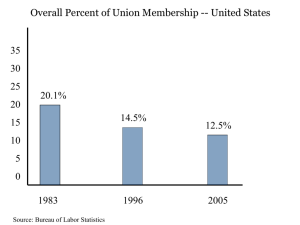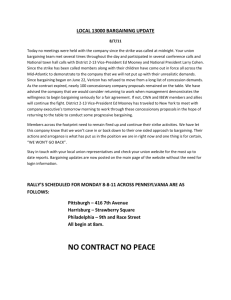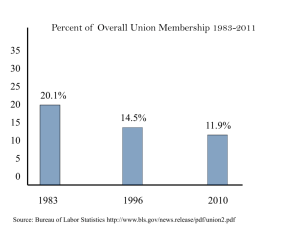TRIPARTISM: Can this dinosaur be slayed?
advertisement
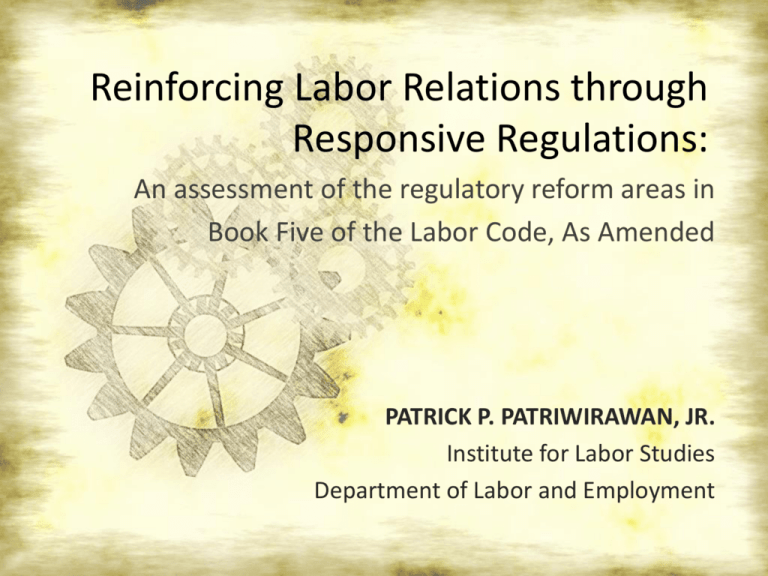
Reinforcing Labor Relations through Responsive Regulations: An assessment of the regulatory reform areas in Book Five of the Labor Code, As Amended PATRICK P. PATRIWIRAWAN, JR. Institute for Labor Studies Department of Labor and Employment Content Outline Issue Definition and Objective Theoretical Paradigms Framework of Analysis Policy Context and Alternatives Recommendations Issue Definition • Since the enactment of the Philippine Labor Code in 1974, profound changes in the socioeconomic and political landscapes have taken place. • Changes have influenced the transformation of a new world of work now perceived to be incongruent with the original framework of the Code. Research Objective • The paper examines the responsiveness of the Code by analyzing the extent to which policy objectives have been carried out through the issuance of regulatory interventions as measured by the identified policy indicators. • The paper advocates for the need to reform the Labor Code as policy issues arise from each of the regulatory areas identified in Book Five – Labor Relations. Theoretical Paradigms • Dunlop’s Industrial Relations System (Dunlop, 1953) – Theory explains and predicts interdependencies or interrelations among process coefficients. • Corporatism (Philippe Schmitter & Gerhard Lehmbruch, 1982) – Direct state intervention in the political or economic system under the banner of public interest. • Theory of Economic Regulation (George Stigler, 1971) – Regulation is instituted primarily for the protection and benefit of the public at large or some large subclass of the public Framework of Analysis Labor Market Realities LR Policy Objectives INPUT 1987 Philippine Constitution LR Policy Formulation PROCESS Institutions OUTPUT PD 442 (Book V) Labor and Other Legislations PD 442 (Art. 3 & Art.211) International Conventions LR Legislations/ Regulations Stakeholders FEEDBACK LR Policy Implementation Administrative Regulations Policy Context: Labor Organization • Policy Objectives: – (1987 Constitution) Right to self-organization – (1974 Labor Code) Free and voluntary labor organization – (ILO Convention 87, 1953) Freedom of Association • Policy Interventions: – Art. 234 – 246 of Book V – Enactment of RA 9481 (2007) Strengthening the right to self-organization – DO No. 40-03 Series of 2003 (IRR on Book V) • Policy Outcome: low density rate over time 30 30.0 25 25.0 20 20.0 15 15.0 10 10.0 5 5.0 0 0.0 2000 2001 2002 2003 2004 2005 2006 Total Wage and Salary Workers 2007 2008 2009 2010 2011 2012 Union Membership Net Union Density Rate Data Source: Department of Labor and Employment. Bureau of Labor and Employment Statistics, 2012 Yearbook of Labor Statistics and Current Labor Statistics (October 2013). http://www.bles.dole.gov.ph/ 2013 Density Rate (%) Number of Workers (in millions) Union Density Rate 40,000 4.00 35,000 3.50 30,000 3.00 25,000 2.50 20,000 2.00 15,000 1.50 10,000 1.00 5,000 0.50 0 0.00 2003 2004 2005 2006 2007 2008 Employed Persons 2009 2010 2011 2012 2013 Workers Association Membership Workers Association Density Rate Data Source: Department of Labor and Employment. Bureau of Labor and Employment Statistics, 2012 Yearbook of Labor Statistics and Current Labor Statistics (October 2013). http://www.bles.dole.gov.ph/ Density Rate (%) Number of Persons (in thousands) Workers Association Density Rate Policy Alternatives Level of Analysis Policy Options Firm/ Enterprise Make 20% requirement for independent unions in Art.234 directory, not mandatory or completely remove minimum membership requirement in Art. 234 Recognize continuous union membership when an employee transfers to another company Industry Enable/Institutionalize multi-employer organizing such as craft unionism or industry unionism National Reduce required number of affiliates for federations Empower TUCs to issue charters Global Encourage affiliations of national unions or federations with international trade unions such as the ITUC Explore the nature of representation of such affiliations Look at possibilities for bilateral union agreements towards multinational union collaborations Policy Context: Collective Bargaining • Policy Objectives: – (1987 Constitution) Right to collective bargaining and negotiations – (1974 Labor Code) Free collective bargaining and negotiations – (ILO Convention 98, 1953) Right to Collective Bargaining • Policy Interventions: – Art. 250 – 259 of Book V – DO No. 40-03 Series of 2003 (IRR on Book V) • Policy Outcome: low coverage rate over time Collective Bargaining Coverage Rate 25,000 4.00 20,000 3.00 2.50 15,000 2.00 10,000 1.50 1.00 5,000 0.50 0 0.00 2000 2001 2002 2003 2004 2005 2006 Total Wage and Salary Workers Workers Covered by Existing CBAs 2007 2008 2009 2010 2011 2012 Union Membership CBA Coverage Rate Data Source: Department of Labor and Employment. Bureau of Labor and Employment Statistics, 2012 Yearbook of Labor Statistics and Current Labor Statistics (October 2013). http://www.bles.dole.gov.ph/ 2013 Coverage Rate (%) Number of Workers (in thousands) 3.50 Policy Alternatives Level of Analysis Policy Options Firm/Enterprise Explore WAs negotiation with local government authorities for security of tenure in the place or routes where they conduct their business/work* Industry Enable/Institutionalize multi-employer bargaining or sectoral/industry-wide bargaining National Explore prospects for national bargaining Global Strengthen partnerships and coordination among national trade unions of ASEAN member countries for possibility of collective bargaining with the employer sector within ASEAN *Bitonio, B. E. R. (2012, November). Industrial relations and collective bargaining in the Philippines. ILO Working Paper No. 41. ILO: Geneva. Policy Context: Dispute Settlement • Policy Objectives: – (1987 Constitution) Preferential use of voluntary modes in settling disputes, including conciliation – (1974 Labor Code) Voluntary arbitration, mediation and conciliation, and adequate administrative machinery for the expeditious settlement of labor disputes • Policy Interventions: – Art. 260 – 262 of Book V – Enactment of RA 6715 New Labor Relations Law and RA 10396 Strengthening Conciliation and Mediation – DOLE Cir. No. 1 (Administrative Intervention for Dispute Avoidance) and DO No. 40-03 Series of 2003 (IRR on Book V) • Policy Outcome: – low disposition rate of cases in the past but with steady improvement – Adversarial, legalistic, complex with multiple entry points and multiple layers of appeal Number of Cases Handled by Type of Case Number of Cases Handled 60000 50000 40000 30000 20000 10000 0 2000 2001 2002 2003 2004 2005 2006 2007 2008 2009 2010 Preventive Mediation Cases Voluntary Arbitration Cases Original Compulsory Arbitration Cases SEnA Request For Assistance 2011 Data Source: Department of Labor and Employment. Bureau of Labor and Employment Statistics, 2012 Yearbook of Labor Statistics and Current Labor Statistics (October 2013). http://www.bles.dole.gov.ph/ 2012 2013 Disposition Rate by Type of Cases 100.00 Disposition Rate (%) 90.00 80.00 70.00 60.00 50.00 40.00 2000 2001 2002 2003 2004 2005 2006 2007 2008 2009 2010 2011 Preventive Mediation Voluntary Arbitration Med-Arbitration (Original) Med-Arbitration (Appealed) Compulsory Arbitration (Original) Compulsory Arbitration (Appealed) SEnA Request for Assistance Labor Standards Cases (Original) Data Source: Department of Labor and Employment. Bureau of Labor and Employment Statistics, 2012 Yearbook of Labor Statistics and Current Labor Statistics (October 2013). http://www.bles.dole.gov.ph/ 2012 2013 Policy Alternatives Level of Analysis Policy Options Firm/ Enterprise Institutionalize labor-management council and/or works council as a preventive mechanism for grievance handling and driver towards productivity gain-sharing Promote workplace bipartite cooperation Industry Explore prospects for industry-based grievance machineries National Harmonize policies in promoting voluntary arbitration and compulsory arbitration Streamline NLRC Rules of Procedure to improve case management and quality management systems Global Explore feasibility of handling grievances for workers engaged in virtual economies Policy Context: Strikes and Lockouts • Policy Objectives: – (1987 Constitution) Right to strike in accordance with law – (1974 Labor Code) Not explicitly stated – (ILO Convention) “The right to strike is not set out explicitly in ILO Conventions and Recommendations.” (Gernigon, Odero, and Guido, 1998) • Policy Interventions: – Art. 263 – 266 of Book V – DO No. 40-03 Series of 2003 (IRR on Book V) – DO No. 40-H-13, Series of 2013 • Policy Outcome: decreasing incidence of strike/lockout 800 9.00 700 8.00 7.00 600 6.00 500 5.00 400 4.00 300 3.00 200 2.00 100 1.00 0 0.00 2000 2001 2002 2003 2004 Strike/ Lockout Notices 2005 2006 2007 2008 Actual Strikes/ Lockouts 2009 2010 2011 2012 Rate of Occurence Data Source: Department of Labor and Employment. Bureau of Labor and Employment Statistics, 2012 Yearbook of Labor Statistics and Current Labor Statistics (October 2013). http://www.bles.dole.gov.ph/ 2013 Rate of Occurrence (%) Number of Strikes/Lockouts Strike and Lockout Notices Policy Alternatives Level of Analysis Policy Options Clarify the elements considered in declaring a valid strike especially in consideration of the new element of “damage to employer” as applied in the decisions of the Supreme Court in the cases of Biflex vs. Filflex (2006) and NUWHRAIN vs. Court of Appeals (2008). Align coverage of prohibition in the exercise of the right to strike from the ILO principle concerning the right to strike with Section 18 of DO 40-G-03 to exclude private security guards and similar personnel in the private security agency. Align ‘essential services’ criterion with the ‘national interest’ requirement in the exercise of Assumption of Jurisdiction Explore the possibility of a globalized strike/lockout among internationally affiliated federation members or multinational companies to provide appropriate intervention in light of the globalized labor economy. Firm/ Enterprise Industry National Global Recommendations 1. Alignment of the provisions of the 1974 Labor Code with the fundamental guarantees of the 1987 Philippine Constitution; 2. Harmonization with international conventions and other labor-related instruments; 3. Expansion of the coverage of employment and employment relations including promotion of gender equity and equality in the definition of employment relations; Recommendations 4. Recognition of the emerging forms of work arrangements and work representations with consideration for gender-specific requisites; 5. Integration of voluntary modes of practices and partnerships between workers and employers; and 6. Configuration of more streamlined dispute settlement systems THANK YOU! Institute for Labor Studies Department of Labor and Employment www.ilsdole.gov.ph (+63) (02) 527-3523
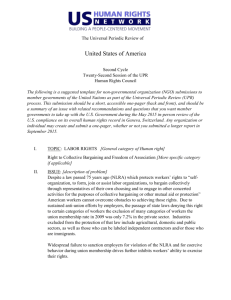
![Labor Management Relations [Opens in New Window]](http://s3.studylib.net/store/data/006750373_1-d299a6861c58d67d0e98709a44e4f857-300x300.png)
